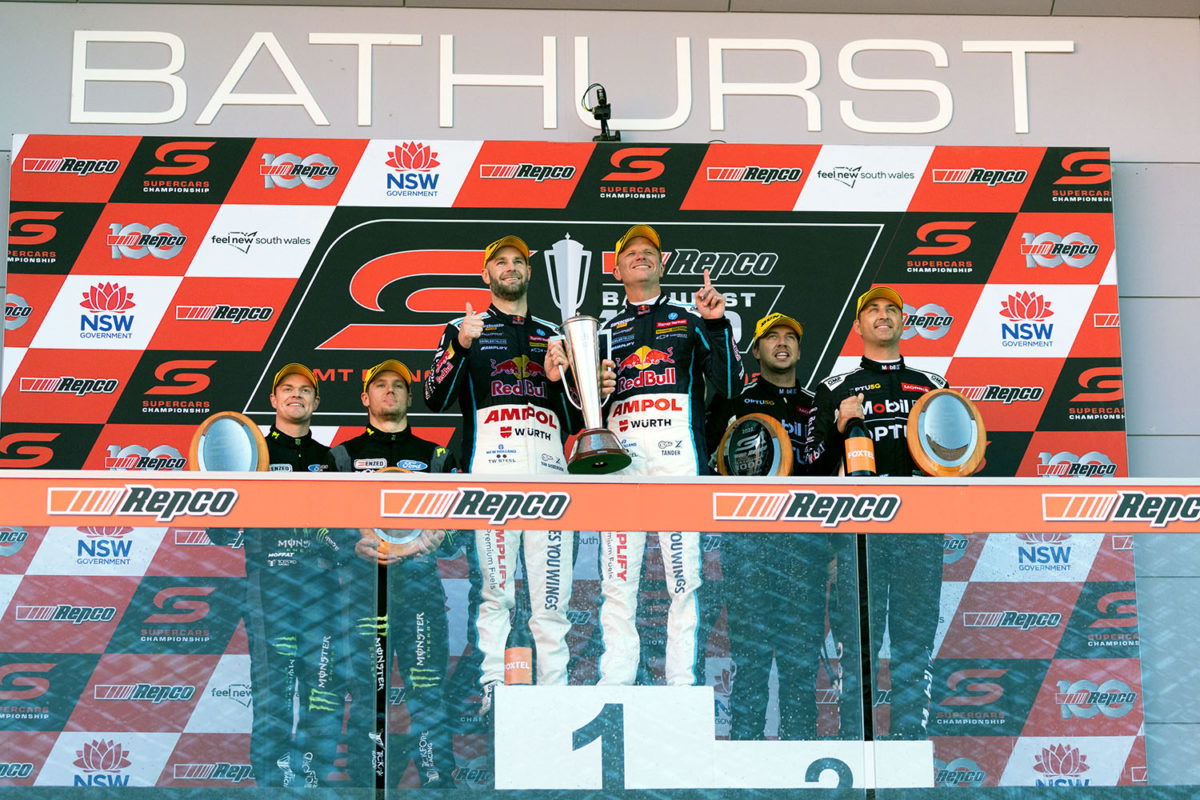

A new book celebrating the 60th anniversary of the Bathurst 1000 has been launched ahead of this year’s Supercars endurance rounds.
Bathurst: 60 Years of the Great Race by Steve Normoyle follows the iconic race after its move from Phillip Island in 1963 to Mount Panorama, taking readers on a journey as the now October classic grew to become Australia’s premier motor race.
Every one of those first 60 years is captured in this new publication through great pictures and fast-moving anecdotes.
From those early years, where cars like the Mini Cooper and the Ford Cortina GT500 – the first Bathurst homologation special – made their mark, the race entered its V8 era that carries on today with the arrival of the Falcon XR GT in 1967.
Then came the switch from 500 miles to the metric 1000 kilometres after the last solo win of a young Peter Brock in 1972, as a track 211km west of Sydney became the battleground for the local car industry, a shop window into each maker’s wares.
Heavyweights Holden and Ford warred at the legendary circuit with names such as Colin Bond, Bob Jane, Allan Moffat, Jim Richards, Larry Perkins and John Harvey starring – and cars like the Valiant Charger looking to upset their dominance and coming oh-so close.
Then there’s the legend of The Rock – the emergence of one Dick Johnson – before the move to Group A that saw a Jaguar victory as the race internationalised; Allan Grice set the first 100mph (160km/h) lap; and the 1987 World Touring Car Championship – the first with the new ‘Caltex Chase’ addition to Conrod Straight – a standout for its controversy in what became Brock’s final, sliding victory.
The Nissan Skyline R32 GT-R changed the game when it stormed to the lead threatening the establishment in 1990 as a sign of things to come – as did the 1993 ruleset that became Supercars – with a stunning debut from ‘The Kid’ Craig Lowndes the following year.
There was heartbreak for Glenn Seton in 1995, and a decade that saw Perkins take three stunning wins and Brock retire.
Bathurst: 60 Years of The Great Race will then take you into the 2000s, and a new team – Triple Eight Racing – emerging alongside Tickford, with Lowndes and Jamie Whincup’s three-peat the first ‘non-Brock’ triple success, before names such as Greg Murphy, Rick Kelly and Chaz Mostert etched their names in what’s now The Peter Brock Trophy.
Then there’s the Gen2 Mustang era, where a Kiwi named Scott McLaughlin achieved the Bathurst dream, before the emotional farewell to Holden with Shane van Gisbergen and Garth Tander’s success.
Bathurst: 60 Years of The Great Race shows that Bathurst is more than a race, evoking the memories – good and bad – across six decades of a contest that changes the winner’s life for good. A race that’s seen last-to-first wins, fairy-tale endings (Lowndes in 2006) and endless rivalries and controversy – from the disqualified European entries in 1987 to ignoring team orders to stop for fuel.
With over 300 colour photos of the stars of motorsport and classic Gelding Street Press design, this is a book every Australian with petrol in their veins should have on their bookshelf.
Steve Normoyle is currently the editor of the motoring and Bathurst racing bible Australian Muscle Car Magazine. He is a long-time motorsport enthusiast with over 40 years’ experience as a motoring and motorsport journalist.
He rose to the role of editor of Motor Racing Australia and Motorsport News magazines, and he compiled most of the Australian Touring Car Championship race programs during the 90s and 2000s.
He is one of Australia’s pre-eminent motorsport historians and has reported on the Bathurst 1000 for over three decades.

This below copy is an edited extract from Bathurst: 60 Years of the Great Race by Steve Normoyle (Gelding Street Press $39.99), which is available at Big W and all good bookstores.
 1993
1993
The turbo Group A cars had been consigned to history.
After much debate about the future direction of Australian touring car racing, the 5.0-litre V8-only era of Holden verses Ford had arrived. The new V8s proved an immediate hit, and the return of the Falcon to racing could not have gone better for Ford – there were only four new Falcons in the field, but they finished first, second, third and fifth in the championship.
However, that kind of dominance led to a performance parity adjustment prior to Bathurst, which saw the Commodores go to the Mountain with increased front downforce. It made the difference – and was a bit of an overkill – and as the Ford challenge collapsed it became a battle between the Gibson Motorsport and Larry Perkins Holdens. It was Perkins and co-driver Gregg Hansford who prevailed.
Making the win all the sweeter was the fact they’d done it with the trusty Holden V8 instead of the controversial new Chev that most of the Holdens were using.




















Discussion about this post